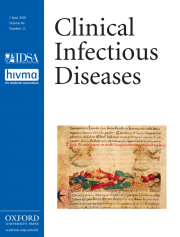Posted on June 01, 2017
Source: Clinical Infectious Diseases

Human Immunodeficiency Virus Type 1 DNA Decay Dynamics With Early, Long-term Virologic Control of Perinatal Infection
Uprety P, Patel K, Karalius B, Ziemniak C, Chen YH, Brummel SS, Siminski S, Van Dyke RB, Seage GR, Persaud D; Pediatric HIV/AIDS Cohort Study
BACKGROUND.:
Early antiretroviral therapy (ART) limits proviral reservoirs, a goal for human immunodeficiency virus type 1 (HIV-1) remission strategies. Whether this is an immediate or long-term effect of virologic suppression (VS) in perinatal infection is unknown.
METHODS.:
We quantified HIV-1 DNA longitudinally for up to 14 years in peripheral blood mononuclear cells (PBMCs) among 61 perinatally HIV-1-infected youths in the Pediatric HIV/AIDS Cohort Study who achieved VS at different ages. Participants in group 1 (n = 13) were <1 year of age and in group 2 (n = 48) from 1 through 5 years of age at VS. Piecewise linear mixed-effects regression models assessed the effect of age at VS on HIV-1 DNA trajectories during VS.
RESULTS.:
In the first 2 years following VS, HIV-1 DNA levels decreased by -0.25 (95% confidence interval [CI], -.36 to -.13) log10 copies/million PBMCs per year and was faster with early VS by age 1 year compared with after age 1 (-0.50 and -0.15 log10 copies/million PBMCs per year, respectively). Between years 2 and 14 from VS, HIV-1 DNA decayed by -0.05 (95% CI, -.06 to -.03) log10 copies/million PBMCs per year and was no longer significantly different between groups. The estimated mean half-life of HIV-1 DNA from VS was 15.9 years and was shorter for group 1 compared to group 2 at 5.9 years and 18.8 years, respectively (P = .09). Adjusting for CD4 cell counts had no effect on decay estimates.
CONCLUSIONS.:
Early effective, long-term ART initiated from infancy leads to decay of HIV-1-infected cells to exceedingly low concentrations desired for HIV-1 remission strategies.